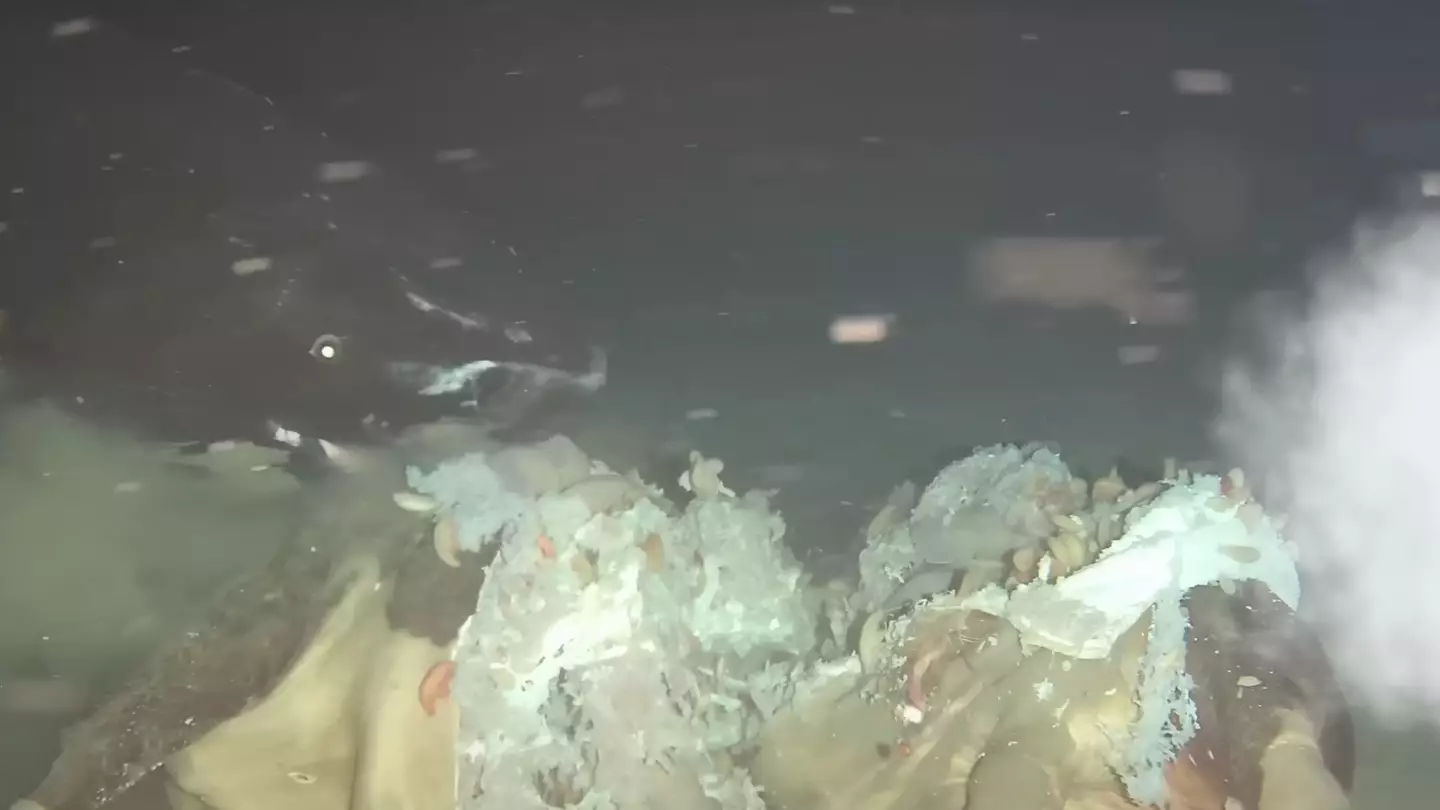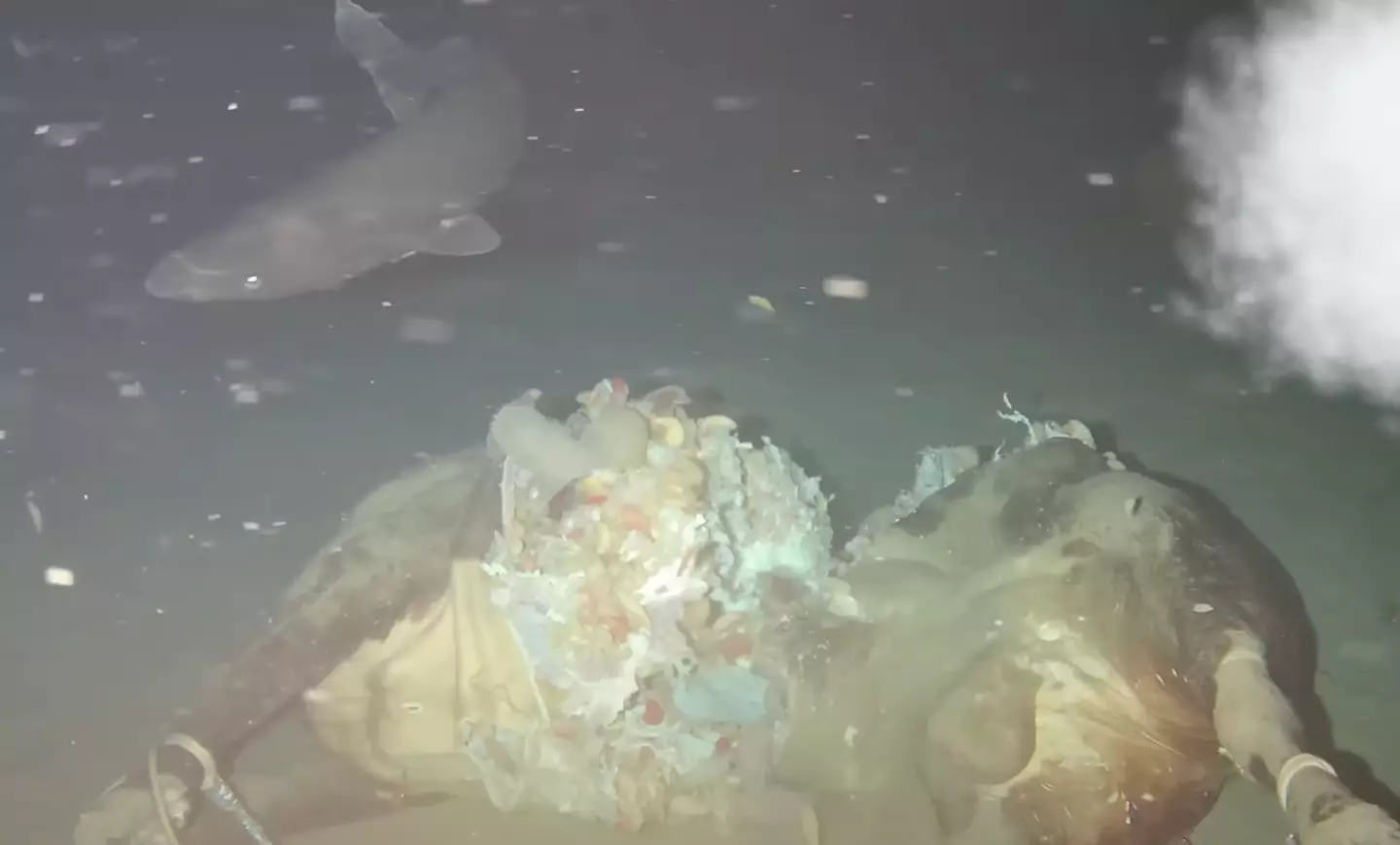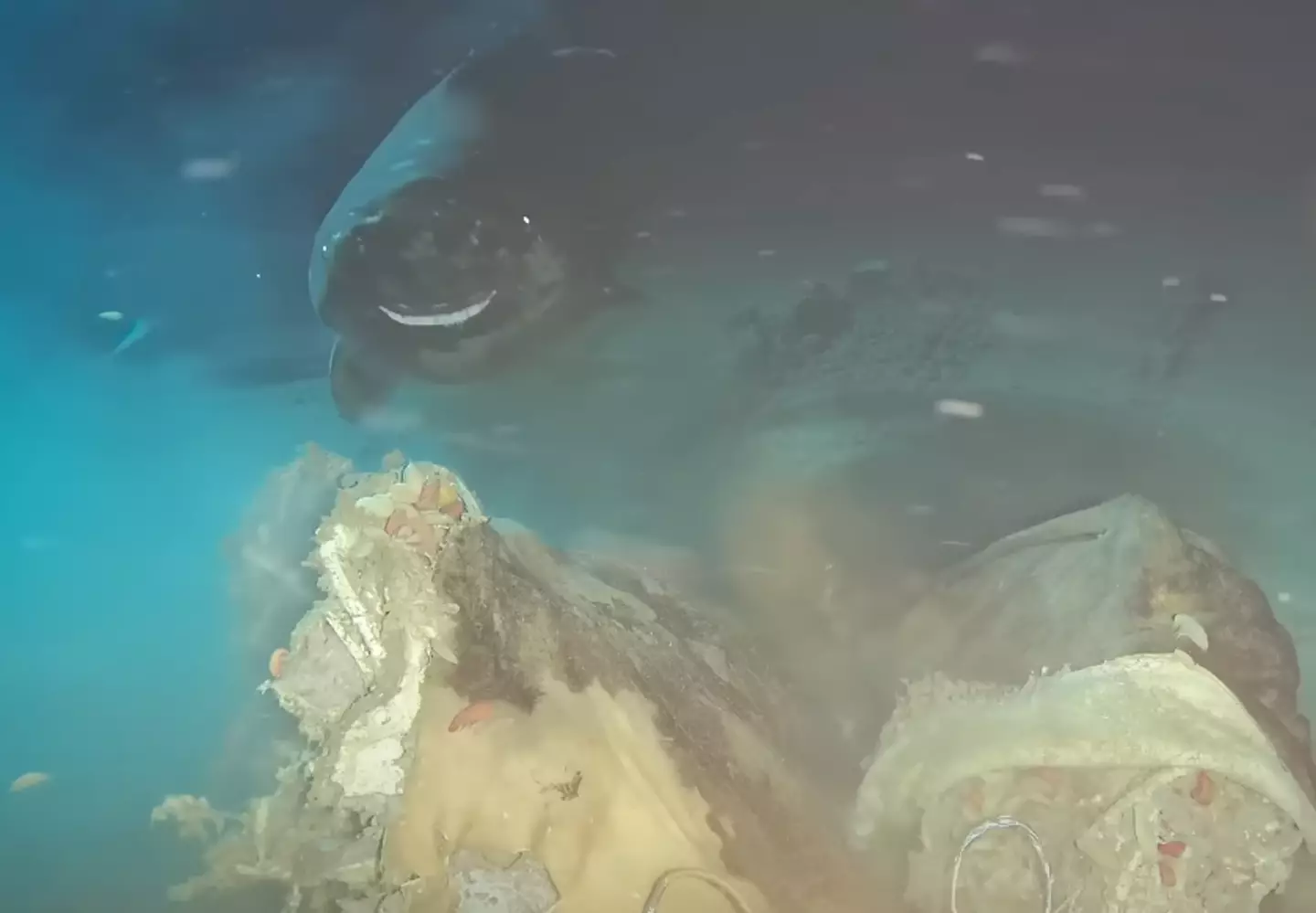
Topics: Animals, Fishing, Science, World News, Sharks

Topics: Animals, Fishing, Science, World News, Sharks
If you've ever wondered what would happen if a cow carcass got dropped into the South China Sea, you've come to the right place.
Scientists from China decided to drop a beefy corpse 1,629 meters down off the continental slope southeast of Hainan Island to see what it would attract.
For evidence purposes, they stuck a camera down there with the hope of gaining new insights into the natural whale fall processes in the deep sea.
So, as the carcass was lying there on the seabed, a number of Pacific sleeper sharks surprisingly popped up.
Advert
These types of sharks are capable of diving to depths over 1,000 meters and are extremely rare to detect in certain areas. But what the researchers didn't see coming was the difference in approach between the feeding strategies of the larger sharks (considered in the study as 2.7 meters long or more) and smaller sharks (less than 2.7 meters long).

The larger sharks looked to be enjoying a bit of beef tartare and viciously attacked the carcass, while the smaller sharks just circled around it cautiously.
There was also a lot of polite queuing behaviour going on, as scientists noticed hierarchical feeding patterns.
“This behaviour suggests that feeding priority is determined by individual competitive intensity, even in deep-water environments, reflecting a survival strategy suitable for non-solitary foraging among Pacific sleeper sharks,” said Han Tian from the Sun Yat-sen University and Southern Marine Science and Engineering Guangdong Laboratory in China.
Advert
Perhaps the most incredible discovery, however, was by film fans in the comments who noticed a pearly white smile on one of the sharks, reminiscent of Bruce in Finding Nemo.

"I wouldn’t have expected Bruce from Finding Nemo either but I know that smile anywhere," one person commented.
A second joked: "Beefs back on the menu boys," while a third pointed out: "Shark has better dental health than I do!!?"
"Guys gonna be chasing that beef taste for the rest of their lives lol," a fourth quipped, as another questioned whether the 'Shark been swimming round Turkey'.
Advert
Well, scientists didn't expect to see the shark swimming around in the South China Sea, as Tian explained: “Although Pacific sleeper sharks have also been found in the deep waters of their typical distribution range in the North Pacific, their frequent occurrence in the southwestern region of the South China Sea suggests that our understanding of this population remains significantly limited.”
He noted that there's still a lot more work to be done to understand the 'highly aggressive behaviour of sharks observed'.
Tian said it 'suggests that this region still harbors abundant food sources in the deep sea. But what exactly are they?'
"This question is intriguing for both animal distribution and behavioral research," he added.
Advert
The research was published in the in the journal Ocean-Land-Atmosphere Research on 1 June, 2025.